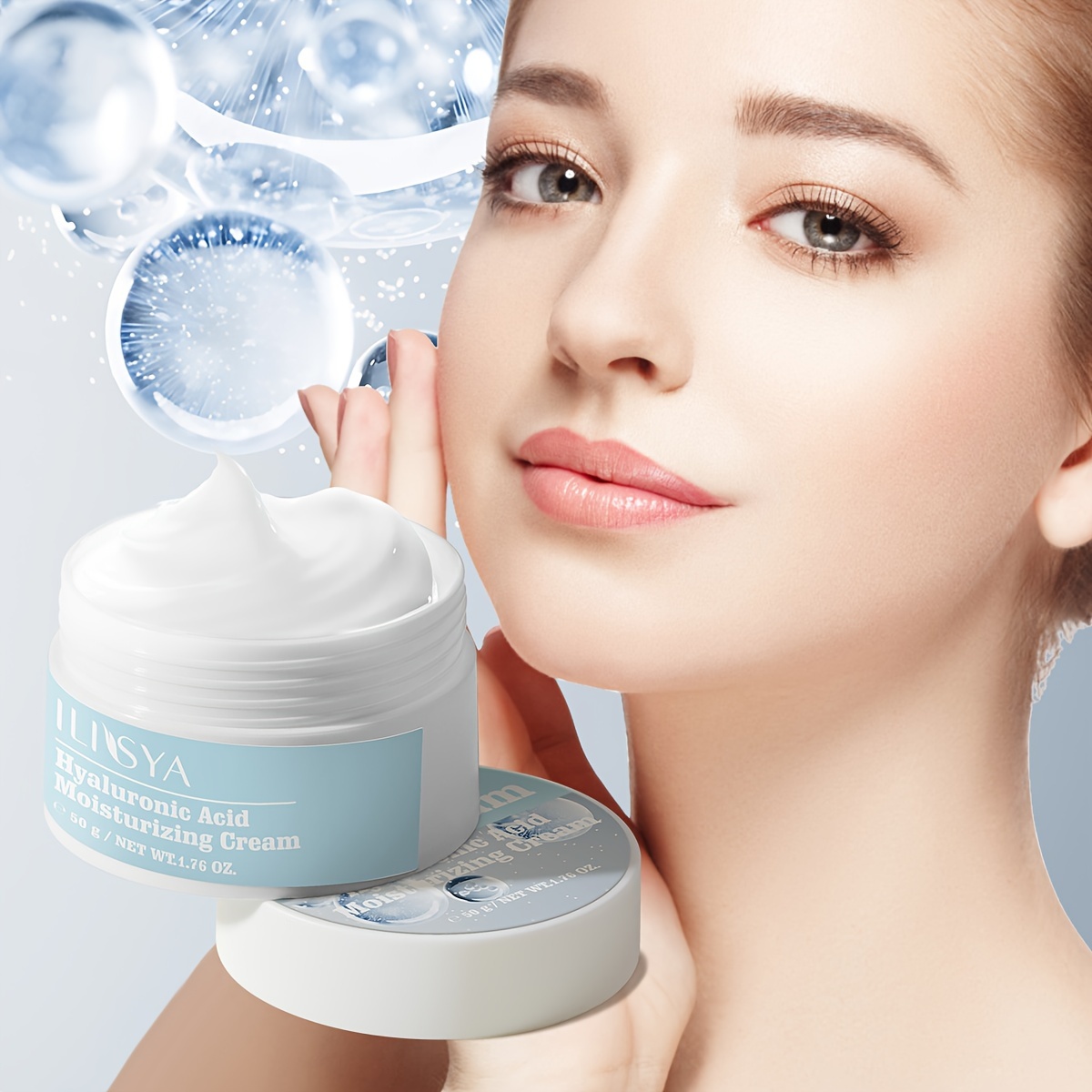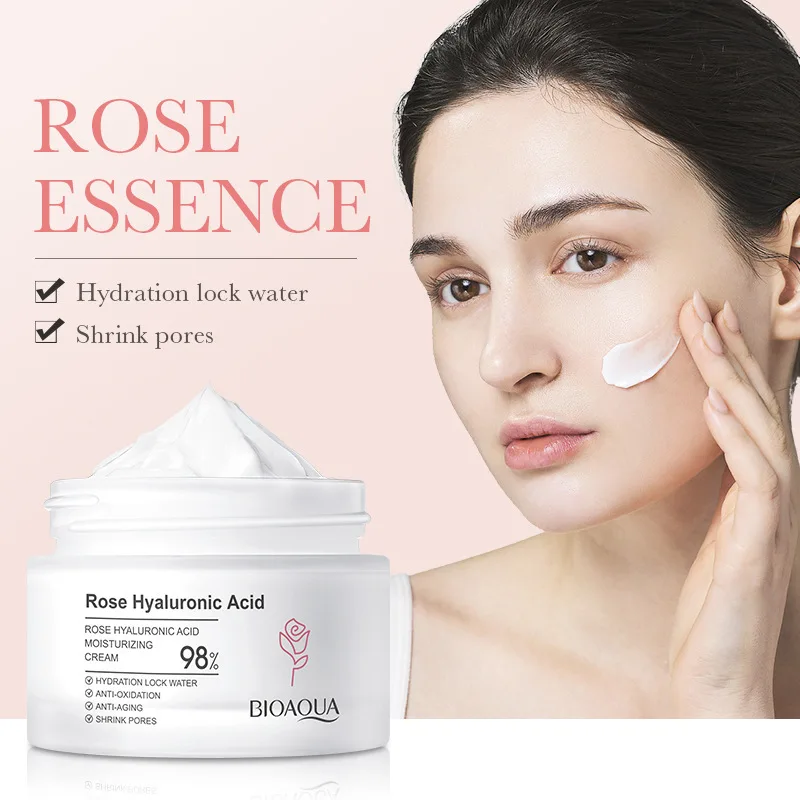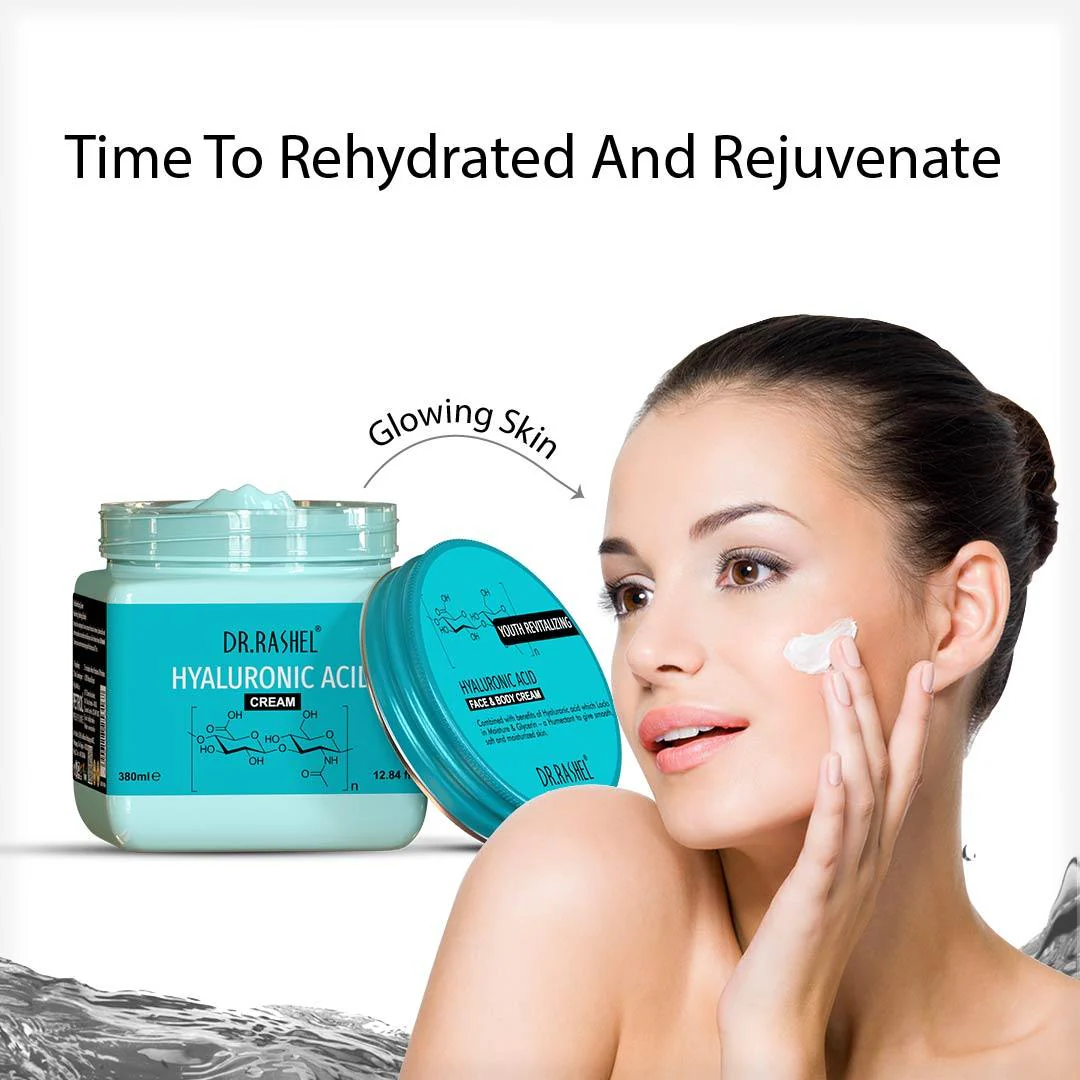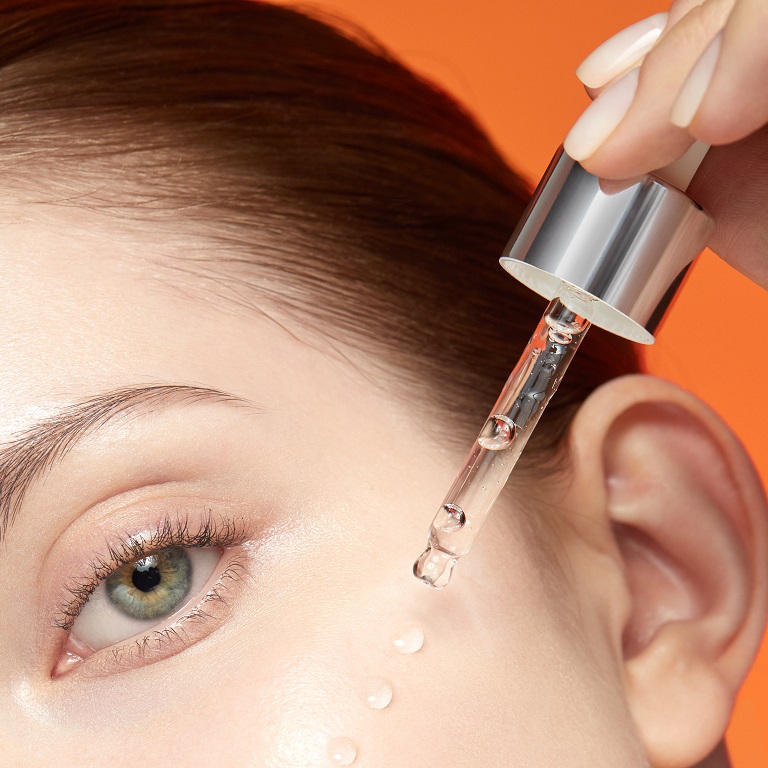Understanding Hyaluronic Acid: Nature’s Moisture Magnet
Hyaluronic acid face cream has become a buzzword in the skincare industry, and for good reason. This naturally occurring substance in the human body acts as a powerful moisture magnet for the skin. Hyaluronic acid can hold up to 1000 times its weight in water, making it an exceptional hydrating agent. The skin contains about 50% of the body’s total hyaluronic acid, which plays a crucial role in maintaining skin hydration, elasticity, and suppleness. As we age, the natural production of hyaluronic acid in our body decreases, leading to drier, less plump skin. This reduction contributes to the formation of fine lines and wrinkles. Consequently, incorporating hyaluronic acid into skincare routines has gained immense popularity. Face creams containing this ingredient provide intense hydration, helping to combat the signs of aging and maintain a youthful appearance.
The Science Behind Hyaluronic Acid’s Effectiveness
The effectiveness of hyaluronic acid lies in its unique molecular structure and properties. As a glycosaminoglycan, it forms part of the skin’s extracellular matrix, which provides structural support to cells. When applied topically, hyaluronic acid forms a protective film on the skin’s surface, preventing moisture loss. Simultaneously, it penetrates the upper layers of the skin, where it binds to water molecules.
This process not only hydrates the skin but also creates a plumping effect, temporarily reducing the appearance of fine lines and wrinkles. Furthermore, hyaluronic acid supports the skin’s natural barrier function, protecting it from environmental stressors and irritants. Recent studies have also shown that hyaluronic acid may stimulate collagen production, further contributing to skin elasticity and firmness. These multifaceted benefits make hyaluronic acid a valuable ingredient in face creams for all skin types.

Choosing the Right Hyaluronic Acid Face Cream
Selecting the ideal hyaluronic acid face cream requires careful consideration of several factors. First, look at the concentration of hyaluronic acid in the product. Higher concentrations don’t always mean better results, as the molecular size of the hyaluronic acid also plays a crucial role. Products containing a mix of high and low molecular weight hyaluronic acid often provide the best results, offering both immediate surface hydration and deeper, long-lasting moisturization.
Additionally, consider the other ingredients in the formulation. Look for complementary ingredients such as ceramides, which help lock in moisture, or antioxidants like vitamin C or E, which provide additional skin benefits. The texture of the cream should also suit your skin type and personal preferences. Those with oily skin might prefer lightweight, gel-like formulations, while dry skin types may benefit from richer creams. Lastly, consider the packaging. Airless pumps or opaque containers help preserve the stability and efficacy of the product.
Incorporating Hyaluronic Acid Face Cream into Your Skincare Routine
Integrating a hyaluronic acid face cream into your skincare routine is relatively straightforward. For optimal results, apply the cream to slightly damp skin. This technique allows the hyaluronic acid to draw moisture from the water on your skin as well as from the atmosphere. Use the cream twice daily, once in the morning and once at night, after cleansing and toning but before heavier moisturizers or oils.
If you use serums in your routine, apply the hyaluronic acid cream after water-based serums but before oil-based products. This order ensures maximum absorption and effectiveness. For those with extremely dry skin, consider using a hyaluronic acid serum underneath the cream for an extra boost of hydration. Always follow up with a sunscreen during the day to protect your newly hydrated skin from UV damage.

Benefits of Hyaluronic Acid Face Cream for Different Skin Types
One of the remarkable aspects of hyaluronic acid is its suitability for all skin types. For dry skin, it provides much-needed hydration, helping to alleviate flakiness and tightness. Oily and combination skin types benefit from its lightweight hydration that doesn’t clog pores or exacerbate oiliness. Sensitive skin appreciates hyaluronic acid’s gentle nature, as it rarely causes irritation and can help soothe inflammation. Mature skin gains from its plumping effect, which temporarily reduces the appearance of fine lines and wrinkles. Moreover, hyaluronic acid can help balance and restore skin that has been damaged by harsh products or environmental factors. Its ability to strengthen the skin barrier makes it beneficial for those prone to acne or rosacea. Regardless of skin type, consistent use of a hyaluronic acid face cream can lead to smoother, more supple, and healthier-looking skin.
Comparing Hyaluronic Acid to Other Hydrating Ingredients
While hyaluronic acid stands out for its exceptional hydrating properties, it’s not the only moisturizing ingredient in skincare. Glycerin, another humectant, attracts water to the skin but doesn’t have the same water-holding capacity as hyaluronic acid. Ceramides, which are lipids naturally found in the skin, help seal in moisture and strengthen the skin barrier. They work well in conjunction with hyaluronic acid. Panthenol, or pro-vitamin B5, also provides hydration and has soothing properties.
Aloe vera offers hydration along with anti-inflammatory benefits. Each of these ingredients has its merits, but hyaluronic acid’s ability to hold 1000 times its weight in water sets it apart. Furthermore, hyaluronic acid’s natural presence in the skin makes it highly compatible and less likely to cause reactions. Many effective moisturizers combine hyaluronic acid with these other hydrating ingredients for comprehensive skin benefits.
Debunking Common Myths About Hyaluronic Acid
Despite its popularity, several misconceptions surround hyaluronic acid use. One common myth suggests that hyaluronic acid draws moisture from the skin, potentially dehydrating it. In reality, it attracts moisture from the environment and deeper skin layers, improving overall hydration. Another misconception is that all hyaluronic acid products are the same. In fact, the molecular weight of hyaluronic acid in a product significantly affects its performance. Some believe that hyaluronic acid only benefits dry or mature skin. However, its lightweight nature makes it suitable for all skin types, including oily and acne-prone skin. There’s also a myth that hyaluronic acid and retinol can’t be used together. In truth, hyaluronic acid can help mitigate the drying effects of retinol when used in conjunction. Lastly, the idea that natural sources of hyaluronic acid are superior is misguided. Synthetic hyaluronic acid is often more stable and effective in skincare formulations.

Potential Side Effects and Precautions
While hyaluronic acid is generally well-tolerated, it’s essential to be aware of potential side effects and take necessary precautions. Some individuals may experience mild irritation, redness, or itching when first using hyaluronic acid products. These reactions are typically temporary and subside as the skin adjusts. In rare cases, allergic reactions may occur. If persistent irritation develops, discontinue use and consult a dermatologist. It’s crucial to apply hyaluronic acid to damp skin or in humid environments to maximize its benefits. In very dry climates, hyaluronic acid might draw moisture from the deeper layers of the skin if not sealed with an occlusive moisturizer. People with eczema or extremely sensitive skin should patch test new products before full application. Additionally, while hyaluronic acid is safe for use during pregnancy and breastfeeding, it’s always best to consult with a healthcare provider before introducing new skincare products during these periods.
The Future of Hyaluronic Acid in Skincare
As skincare technology advances, the future of hyaluronic acid looks promising. Researchers are exploring new ways to enhance its efficacy and delivery into the skin. One area of focus is the development of low molecular weight hyaluronic acid that can penetrate deeper into the skin layers for more lasting hydration. Another exciting avenue is the combination of hyaluronic acid with other active ingredients to create multifunctional products. For instance, hyaluronic acid paired with peptides or growth factors could offer both hydration and anti-aging benefits. Some companies are investigating the potential of fermented hyaluronic acid, which may have enhanced skin benefits. Additionally, the use of encapsulation technologies to improve the stability and time-release properties of hyaluronic acid is being studied. These innovations could lead to even more effective and long-lasting hydration solutions in the future.

Conclusion: Embracing Hyaluronic Acid for Radiant, Hydrated Skin
Hyaluronic acid has rightfully earned its place as a staple in skincare routines worldwide. Its unparalleled ability to hydrate and plump the skin makes it a valuable ingredient for maintaining skin health and combating signs of aging. By incorporating a hyaluronic acid face cream into your daily regimen, you can enjoy smoother, more supple, and younger-looking skin. Remember to choose a product that suits your skin type and concerns, and use it consistently for best results. While hyaluronic acid offers numerous benefits, it works best as part of a comprehensive skincare routine that includes proper cleansing, sun protection, and a balanced diet. With its gentle nature and impressive results, hyaluronic acid face cream stands as a powerful tool in the quest for radiant, well-hydrated skin.
